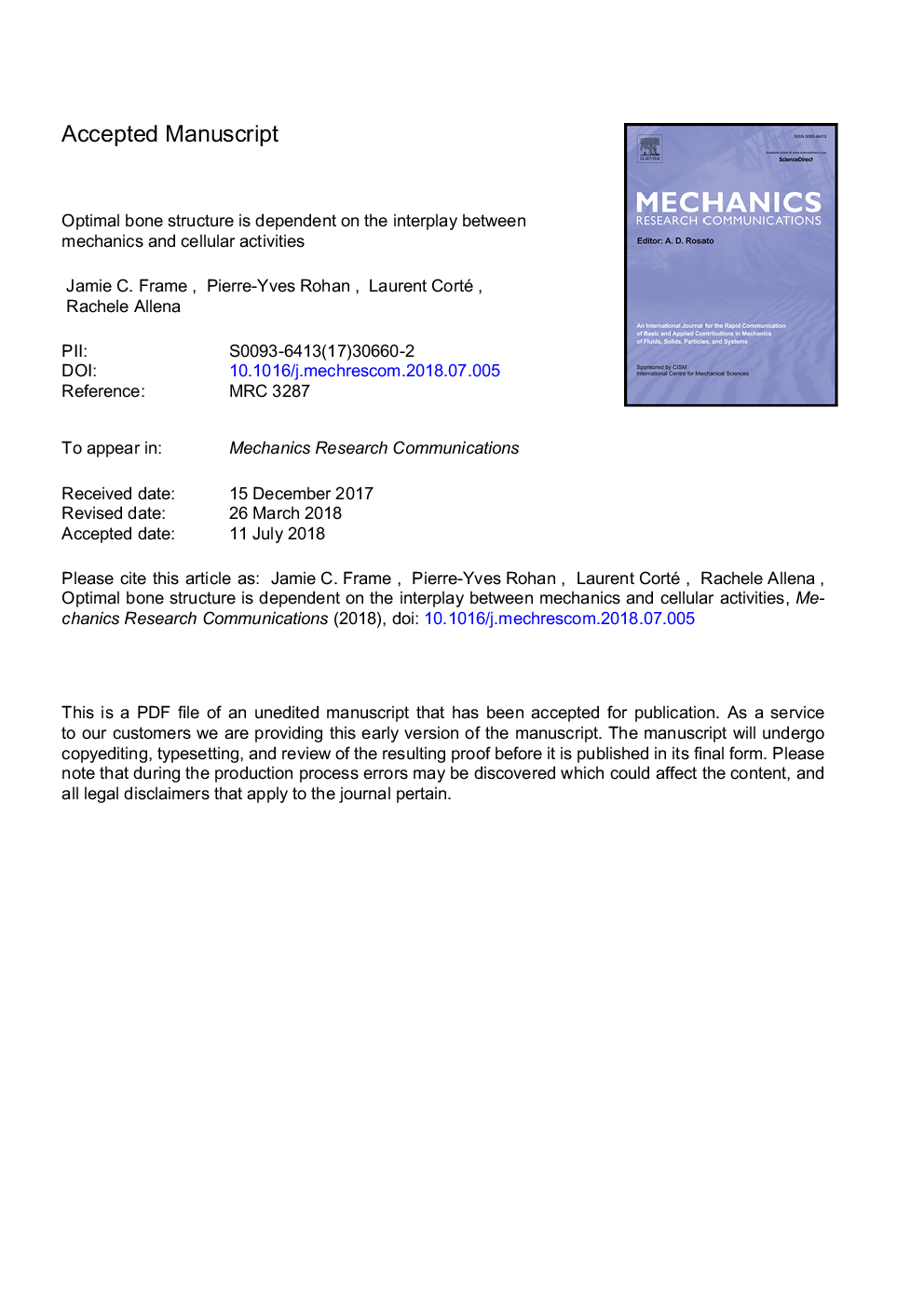| Article ID | Journal | Published Year | Pages | File Type |
|---|---|---|---|---|
| 7178735 | Mechanics Research Communications | 2018 | 9 Pages |
Abstract
Bone is a tissue with the remarkable capacity to adapt its structure to an optimized microstructural form depending on variations in the loading conditions. The remodeling process in bone produces distinct tissue distributions such as cortical and trabecular bone but also fibrous and cartilage tissues. Although it has been demonstrated that mechanical factors play a decisive role in the architectural optimization, it may also follow that biological factors have an influence. This interplay between loading and physiology has not been previously reported but is paramount for a proper assessment of bone remodeling outcomes. In this work we present a mechanostat model for bone remodeling which is shown to predict the mechanically driven homeostasis. It is further demonstrated that the steady-state reached is innately dependent upon the loading magnitudes and directions. The model was then adjusted to demonstrate the influence of specific biological factors such as cell proliferation, migration and resorption. Furthermore, two scenarios were created to replicate the physiological conditions of two bone disorders - osteoporosis and osteopetrosis - where the results show that there is a significant distinction between the homeostatic structures reached in each case and that the tissue adaptations follow similar trends to those observed in clinical studies.
Related Topics
Physical Sciences and Engineering
Engineering
Mechanical Engineering
Authors
Jamie C. Frame, Pierre-Yves Rohan, Laurent Corté, Rachele Allena,
